- Solar advice hub
- Batteries
- Home battery storage without solar in the UK
Home battery storage without solar in the UK
Understand the key limitations of battery storage without solar panels, and why it’s better to include solar.


Why you can trust our content
We know that the solar industry is full of misinformation, but we only use reliable sources, including:
- Our experienced solar experts, installers and system designers
- Our own database of solar & battery system designs
- Authoritative bodies like MCS and the UK government



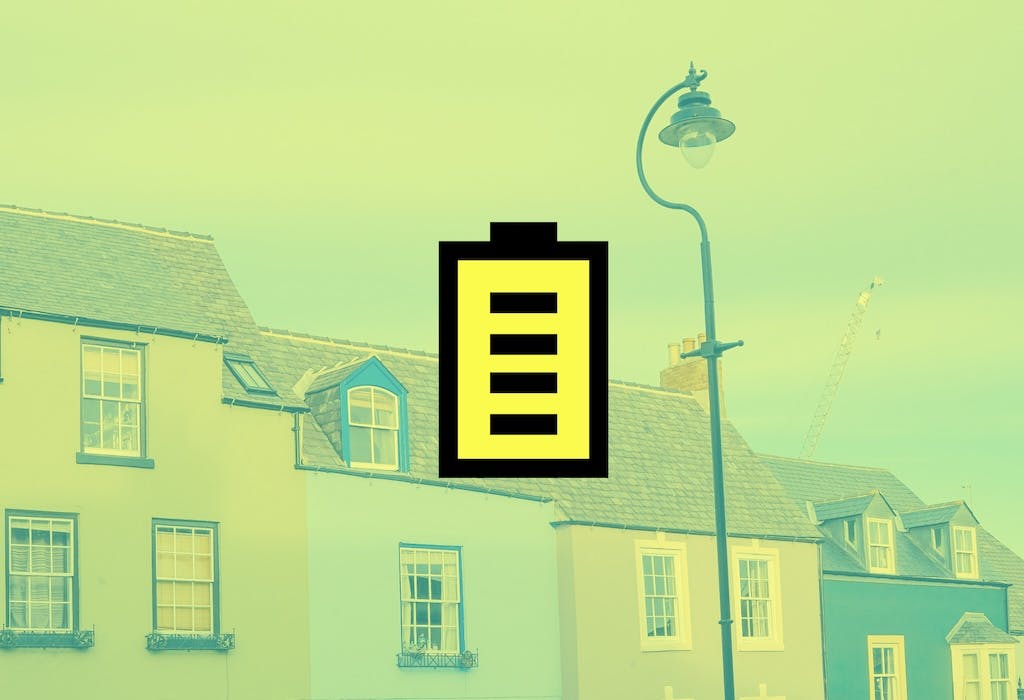
Batteries without solar panels: at a glance
Despite solar panels and storage batteries being a very common and productive pairing for households in the UK, it is technically possible to have a storage battery without solar panels.
In this article, we’ll explain how it works to have a standalone battery, how much it costs, and why it makes much more financial sense to get a battery with solar panels.
At Sunsave, we don't install standalone batteries for this very reason. To find out how much a solar & battery system could save you in the long run, answer a few quick questions below and we'll generate an estimate.
Can you have a storage battery without solar panels?
Yes, you can have a storage battery without solar panels.
Storage batteries, or battery energy storage systems (BESS), can store electricity from a variety of sources, including the grid or renewable sources like wind or hydroelectric power.
Their primary role is to hold electricity for later use, but it doesn’t actually matter where this electricity comes from.
How does it work?
Your installer will first work out where to put your battery, which will ideally be outside or in your garage (as per the latest guidelines).
You’ll also need an inverter that sits one or two metres away from your battery (if it’s not built-in), to enable the system to send information to the grid and your app, which is made by the inverter’s manufacturer.
The installer will also run a communication cable, usually known as a comms cable, between the battery and your supply meter.
It’ll then be up to you to take advantage of the ways having a battery can save you money.
You’ll need to sign up to a time of use import tariff – that is, one that comes with peak and off-peak periods.
Using your inverter app, you can set your battery to only import electricity from the grid during off-peak periods – usually nighttime hours – then use this electricity to power your home during peak times.
Some batteries communicate with the grid smartly, so they can automatically import electricity when it’s cheapest, but even then, it’s worth checking on them every so often.
You should also get an export tariff, just in case you import more electricity than you ultimately need, and end up having to send it to the grid. Unfortunately, there aren’t many export tariffs that work with just a battery.
What are the benefits of battery storage without solar?
There are just two benefits of having a battery without a solar setup.
One is financial – though the money you make will be a fraction of what you can earn with solar panels – and the other relates to power cuts.
- You can buy electricity when it’s cheaper
- You (might) have a backup power source
Let’s go through these two benefits in more detail.
1. You can buy electricity when it’s cheaper
You charge up your battery with off-peak electricity every night, then use it during peak hours.
You’ll need a time of use import tariff for this to work – meaning one that has a different price at off-peak and peak times. This will usually involve signing up to an Economy 7 tariff, which provides you with seven off-peak hours every night.
During the October 2024 price cap, the average off-peak price on an Economy 7 tariff is 13.19p per kilowatt-hour (kWh), while the cost of electricity on a regular tariff is 24.5p per kWh.
This means that every kWh of off-peak electricity you use will save you 11.31p.
The average household uses 9.3kWh of electricity per day – so if you have a 5.2 kWh battery, you’ll be able to use cheap off-peak electricity to power your home for nine and a half hours during the day.
This equates to a daily saving of £1.07, though since your battery doesn’t cover all your usage, you’ll still have to pay the higher rate on all your electricity consumption that falls in peak hours.
The average Economy 7 peak rate is 30.59p per kWh, which means the typical household that uses 3,400kWh of electricity per year will pay an extra 25p per day for non-battery usage.
In total, the average home with this setup will save 82p per day compared to the price cap, or £299 per year.
However, a 5.2kWh standalone battery costs £5,000 on average, meaning you won’t break even on it for around 17 years – which is much longer than the average lifespan of a battery.
2. You (might) have a backup power source
Some batteries can provide a backup power source during power cuts, called emergency power supply (EPS).
If the battery you choose comes with this function, you’ll still need an electrician to set it up, as it requires a separate consumer unit (also known as a fuse box) to be installed in your home.
This consumer unit is connected to a dedicated EPS socket, specific circuits within your home, or all your circuits. In a blackout, it’ll send the electricity in your battery to these outlets.
However, the UK’s lack of power cuts means this is only really necessary if you have medical equipment that must always remain on.
The average home in this country experiences 0.4 outages per year, and loses electricity for roughly 35 minutes in total, according to the latest Ofgem report.
Lengthy power cuts are rare – and in the unlikely situation that one does happen to you, you’ll still only be able to use the electricity you happen to have in your battery when your area goes dark.
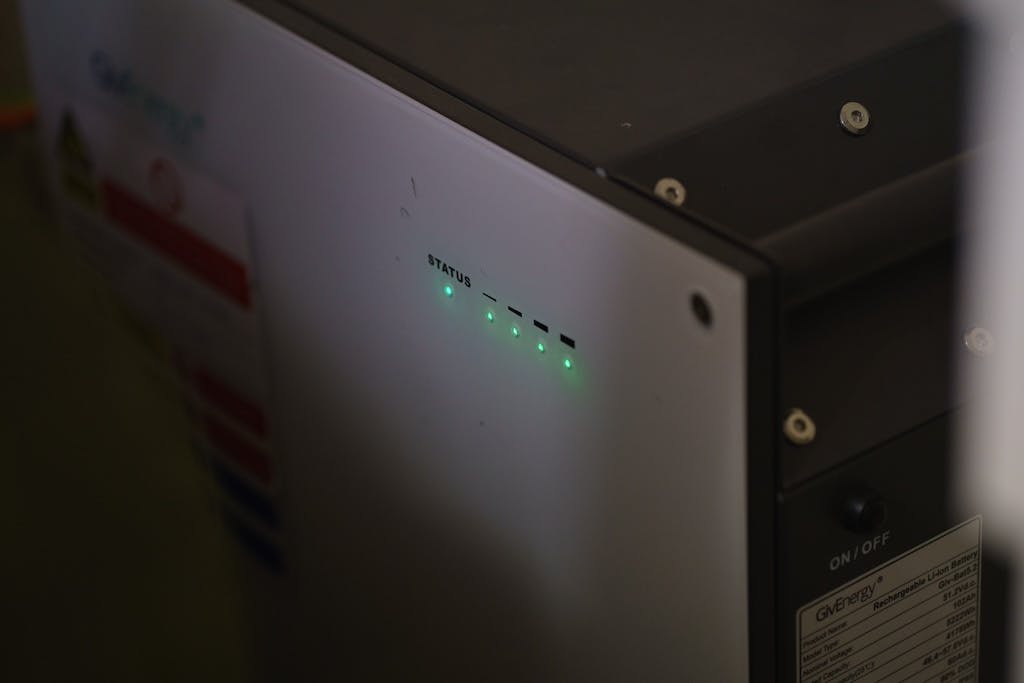
What are the disadvantages of battery storage without solar?
There are multiple major disadvantages of battery storage when compared to having a solar & battery system.
- You’ll miss out on export tariffs
- It’s much more expensive than charging up on solar
- You’re very unlikely to break even (i.e. before the battery needs replacing!)
- You’ll be vulnerable to energy price inflation
- Your carbon footprint will stay the same
Let’s run through these disadvantages in more detail.
1. You’ll miss out on export tariffs
With solar panels, you can massively benefit from signing up to an export tariff.
A solar panel system will go through periods every year when it generates more electricity than a household can use, even with a battery. This excess energy is sent to the grid.
With an export tariff, you can get paid for each kWh you send – and that’s on top of the money you’re saving by using the rest of the electricity your panels produce.
A typical UK household can earn £361 per year from exporting their excess solar electricity.
This figure is based on a home using 3,400kWh of electricity per year (which is the UK average) with solar irradiance of 850kWh/kWp, a 4.4kWp solar PV system, and a 5.2kWh battery. The home is signed up to E.ON’s Next Export Exclusive for export, E.ON Next Drive for import, and exports 65% of its solar electricity.
To learn more, check out our guide to the best export tariffs.
2. It’s much more expensive than charging up on solar
Even if you sign up to an Economy 7 tariff and charge your battery with off-peak electricity, it’ll always be much more expensive than free, solar-generated electricity.
With a well-sized solar panel system, you’ll power a good chunk of your home’s electricity needs all year round, and there’ll be times in summer when your system will take care of your household’s entire daily needs – for free.
In contrast, a standalone battery will get you seven and a half hours of slightly discounted electricity.
This is why you’ll typically save hundreds more pounds with a solar & battery system than you will with a standalone battery.
You’ll also be on a regular import tariff, so when your battery runs out of solar electricity, you won’t have to use the peak rate that Economy 7 tariffs come with.
3. You’re very unlikely to break even (i.e. before the battery needs replacing!)
As mentioned above, a standalone 5.2kWh battery typically costs £5,000.
So even though it’ll save you £299 per year on average, you won’t break even on it for around 17 years – which is considerably longer than the standard battery’s lifespan of 10-12 years.
If you include a battery in a solar installation however, it only adds between £2,000 and £3,000 to the overall cost, as the price of labour and inverter is already included.
By using free solar electricity and one of the best export tariffs, you can break even much quicker on a solar & battery system – in just over eight years, on average.
This figured is based on a sample of over 150 systems installed by Sunsave across England and Wales in 2024. The average system is 6.1kWp, with 54% of solar electricity used at home and 46% exported to the grid.
4. You’ll be vulnerable to energy price inflation
Every time energy prices rise, your Economy 7 tariff’s rates will increase too.
And since you’re only cutting your costs by a fraction with a standalone battery, the effect on your bills will still be significant.
If you have solar panels, this picture changes completely. Your home will generate free electricity that can massively reduce the amount of electricity you require from the grid, all while earning extra money by selling excess electricity.
This means that even if (or when) electricity prices rise, it won’t make much difference to your bills.
5. Your carbon footprint will barely change
A battery will only slightly reduce your carbon footprint, since you’ll import more of your electricity during off-peak periods, which are less carbon-intensive than peak hours.
You’ll save around 80g of CO2 for each kWh of off-peak electricity you use instead of a kWh of electricity generated at peak times. If you have a 5.2kWh battery, that adds up to 152kg of CO2 per year.
With solar panels, you can cut your household’s carbon emissions by 1.1 tonnes per year – around seven times more, and 61% of the average home’s footprint.
This estimate is based on the average saving made by 32 different solar & battery system designs from Sunsave’s database, comprising properties from all over England and Wales. Each system in this sample uses 430W solar panels and a 5.8kWh battery.
What's the best export tariff to use with a storage battery?
The best export tariff to use with a standalone storage battery is British Gas’s Export and Earn Plus rate.
This tariff will pay you 15.1p for every kWh you send to the grid – one of the top rates around – and all you need to do is get a battery and import your electricity from British Gas.
With a standalone battery, you’ll want to use the supplier’s Economy 7 tariff, which offers a 13.32p per kWh off-peak rate and 30.50p per kWh peak rate, as of October 2024.
This peak rate is slightly better than the market average, though the off-peak rate is a bit worse.
Though it’s worth signing up to this export tariff just in case you have extra electricity you need to send to the grid, the profit of 1.78p on each kWh you export is still measly – especially when compared to export earnings you can make with solar panels.
How much does a standalone storage battery cost?
A 5kWh standalone storage battery costs around £5,000.
If you’re looking for a larger battery, a 10kWh model will set you back about £7,000.
This is typically £2,000-£3,000 more than it’ll cost you as part of a solar & battery installation, as in that case, the inverter and labour costs would already be included.
So for example, if you’re getting a 10kWh battery as part of your solar & battery system, the battery itself would usually cost between £4,000 and £5,000.
If you’re thinking of getting solar panels at any point, it’s worth buying them at the same time you get your battery. It’ll cost less overall, and the sooner you start generating electricity, the more you’ll save.
All of these prices can fluctuate depending on multiple factors including the battery’s brand, the size of the battery, its quality, and the complexity of the installation.
Are there any grants or schemes for storage batteries?
There are plenty of solar panel grants and schemes that offer solar & battery systems, but none that provide free standalone storage batteries.
However, if you have a mortgage with Barclays, Halifax, or Lloyds, you may be able to access a £1,000 cashback after you get a storage battery installed, thanks to their green home rewards schemes.
If you’re looking for a solar & battery grant, ECO4 and the Home Upgrade Grant (HUG) give funding to energy suppliers and local authorities, respectively, to make energy-saving improvements to low-income, vulnerable households.
Unfortunately, to qualify for a solar installation through ECO4, your home must be electrically heated, and HUG only funds solar measures for households that aren’t on the gas grid.
The Welsh Government Warm Homes Programme and the Warm Homes: Social Housing Fund are also designed to provide energy-efficient upgrades like solar & battery systems, but are only directed at households in Wales and at social housing.
Everyone can benefit from the 0% VAT rate on solar installations though, which applies to standalone storage batteries regardless of whether they’re installed with solar panels, until at least March 2027.
If you want to avoid the high upfront cost of storage batteries but don’t qualify for any of the most helpful grants, it’s worth considering Sunsave Plus, which can provide an entire solar & battery system with no upfront cost.
To sign up for the UK's first solar subscription, follow the link below, enter a few details, and we'll be in touch.

The UK's first solar subscription
- No upfront cost
- Fixed monthly fee
- 20-year Sunsave Guarantee
Could you add solar panels to your storage battery later on?
You can add solar panels to a storage battery later on.
Your installer will just need to check whether your battery came with an inverter that can convert solar electricity. If not, they’ll install a new inverter at the same time as the panels.
It’s more common to purchase solar panels at the same time as the battery, as it saves you money on labour and inverter costs.
It also enables you to massively reduce your electricity bills.
Is it better to get a storage battery with or without solar panels?
We recommend getting a storage battery with solar panels.
A standalone battery can save you money, but not enough to break even, and you’ll still be vulnerable to energy price rises.
With a solar & battery system, you can use the free electricity your panels generate to shrink your bills – and when your system produces excess electricity, you can use one of the top export tariffs to sell it to the grid.
You’ll also have a considerably greener property, and probably a more attractive one, since solar panels can increase the value of your home.
If you’re unable to get solar panels at this time, a battery still has its uses – but they’re limited.
Battery storage without solar: FAQs
Related articles
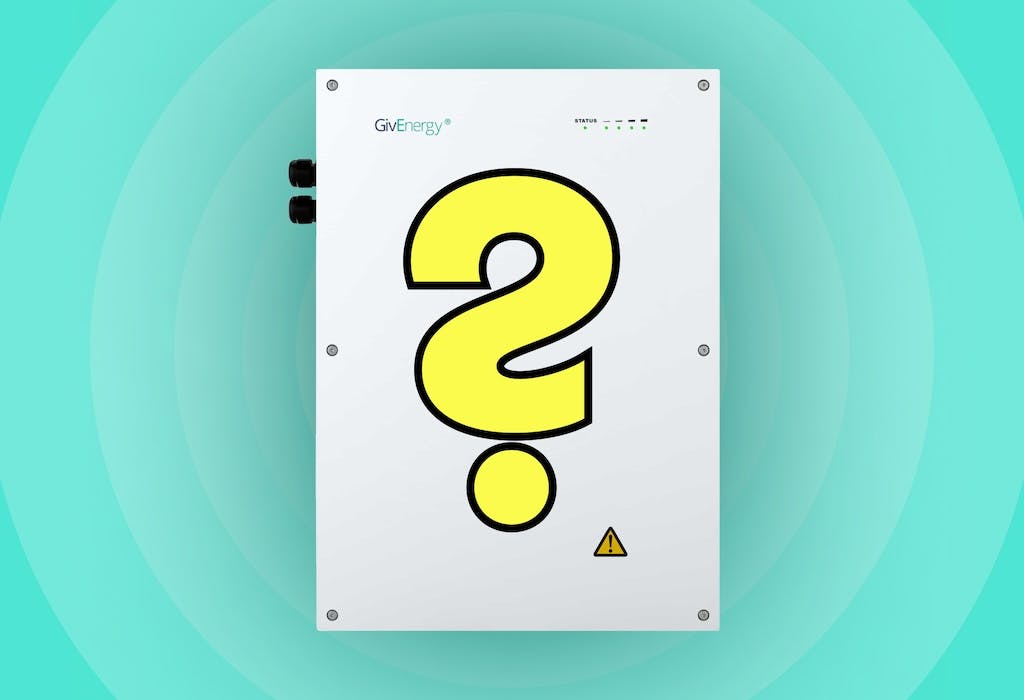
Are solar batteries worth it?
Read full story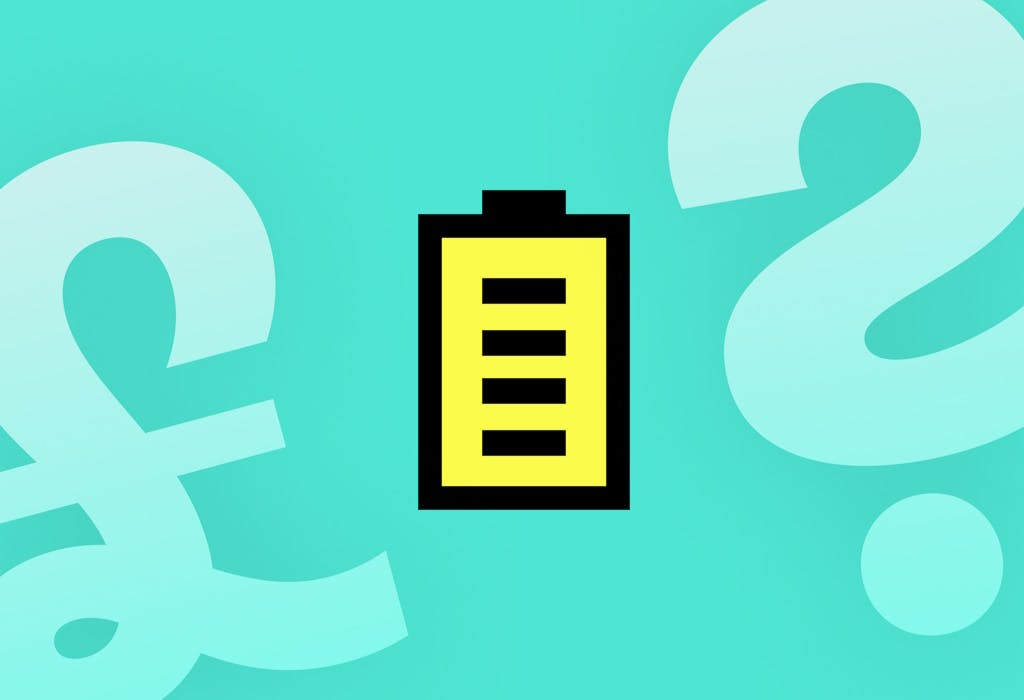
How much does a solar battery cost in the UK?
Read full story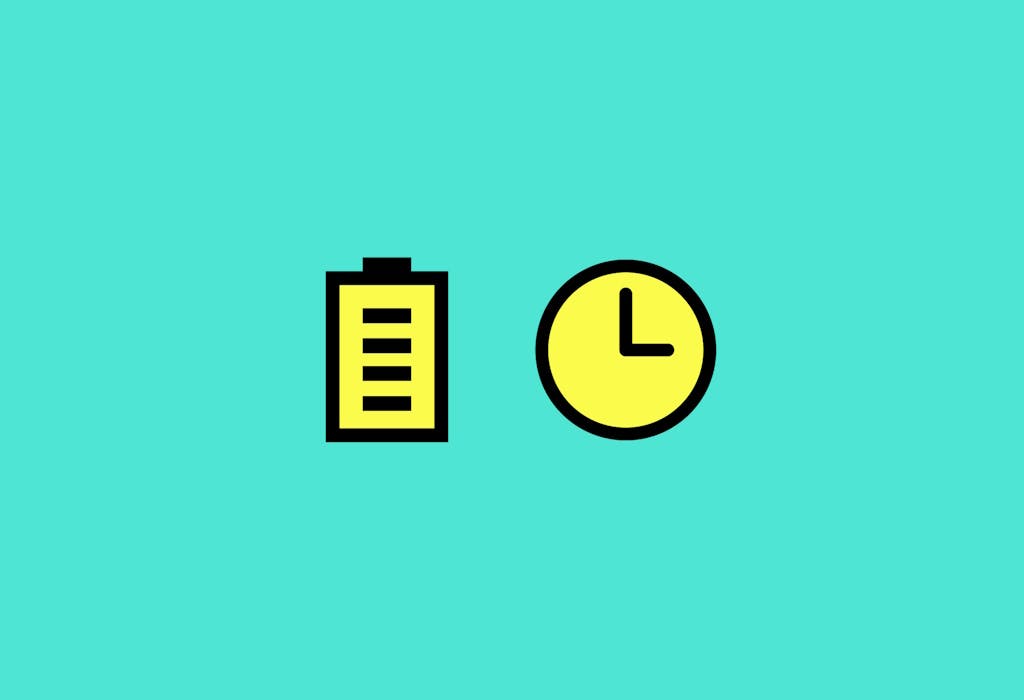
How long do solar batteries last?
Read full story
What size solar battery do I need?
Read full story
Written byMelody Abeni
Based in London, Melody is a specialist green technology writer who has been covering sustainability, climate action and ESG for the past five years, after gathering operational experience in green investing and financial services. She has written for various industry publications, including renewable technology advisor The Eco Experts, and she holds a Master’s degree in law from Birkbeck University.